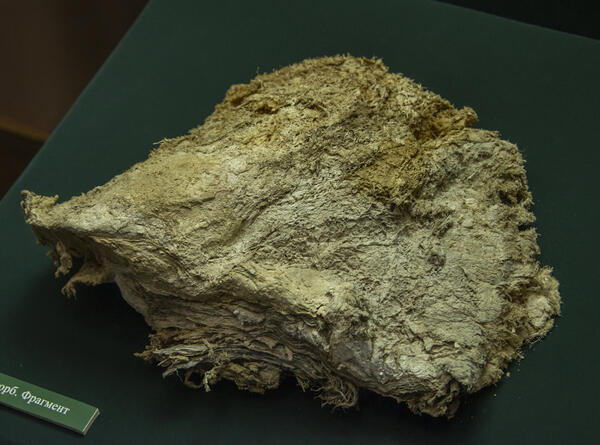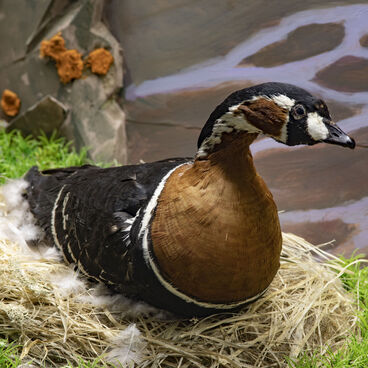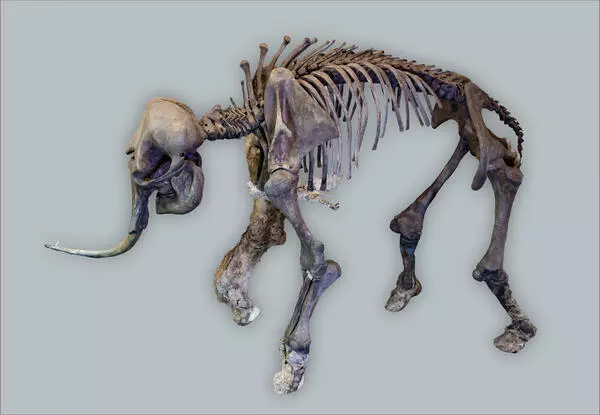Most of the Taimyr territory, the Taimyr Depression, and the Byrranga Mountains, the northernmost of the continental mountain systems on the planet, are part of the permafrost zone. Permafrost strata serve as an excellent preservative and are therefore very valuable for paleontologists. That is where a lot of important finds are made — the bone remains and whole carcasses of ancient representatives of “mammoth fauna”. There were particularly many such finds in the 19th and 20th centuries.
In 2016, the exhibition of the Taimyr Local History Museum was enriched by the “Sopkarginskiy Mammoth” — a skeleton and stuffed animal, prepared by a group of restorers-taxidermists of the Zoological Museum and Institute of the Russian Academy of Sciences of Saint Petersburg.
The mammoth got its official name from the place of its discovery — near the meteorological station Sopochnaya Karga in the settlement Vorontsovo. It also got its discoverer’s name — Zhenya. Eleven-year-old Zhenya Salinder discovered the remains on August 28, 2012; after that excavations were organized at the site of the find and conducted by experts in mammoth fauna together with local residents.
The mammoth carcass was lying on its right side. The paleontologists fixed it in the thickness of the permafrost and extracted it. It had a lot of soft tissues, fragments of skin, and some internal organs preserved. The find was delivered by helicopter to Dudinka, and from there to the Saint Petersburg Zoological Institute of the Russian Academy of Sciences.
Paleontologists, conservationists, taxidermists, an international group of scientists, and the International Mammoth Committee spent more than two and a half years studying the remains of the mammoth. The found specimen turned out to be a sexually mature male, aged 15–16 years.
The diet of herbivorous mammoths included tree shoots, herbaceous plants, low shrubs, and moss. Coarse fibrous food was milled by animals with numerous lamellar enamel capsules filled with dental matter; there was one molar tooth in each half of the jaw. The dentition occurred up to six times in a lifetime.
The fat hump served to store nutrients, allowing the animal to survive a period of adverse environmental conditions.
In 2016, the exhibition of the Taimyr Local History Museum was enriched by the “Sopkarginskiy Mammoth” — a skeleton and stuffed animal, prepared by a group of restorers-taxidermists of the Zoological Museum and Institute of the Russian Academy of Sciences of Saint Petersburg.
The mammoth got its official name from the place of its discovery — near the meteorological station Sopochnaya Karga in the settlement Vorontsovo. It also got its discoverer’s name — Zhenya. Eleven-year-old Zhenya Salinder discovered the remains on August 28, 2012; after that excavations were organized at the site of the find and conducted by experts in mammoth fauna together with local residents.
The mammoth carcass was lying on its right side. The paleontologists fixed it in the thickness of the permafrost and extracted it. It had a lot of soft tissues, fragments of skin, and some internal organs preserved. The find was delivered by helicopter to Dudinka, and from there to the Saint Petersburg Zoological Institute of the Russian Academy of Sciences.
Paleontologists, conservationists, taxidermists, an international group of scientists, and the International Mammoth Committee spent more than two and a half years studying the remains of the mammoth. The found specimen turned out to be a sexually mature male, aged 15–16 years.
The diet of herbivorous mammoths included tree shoots, herbaceous plants, low shrubs, and moss. Coarse fibrous food was milled by animals with numerous lamellar enamel capsules filled with dental matter; there was one molar tooth in each half of the jaw. The dentition occurred up to six times in a lifetime.
The fat hump served to store nutrients, allowing the animal to survive a period of adverse environmental conditions.






